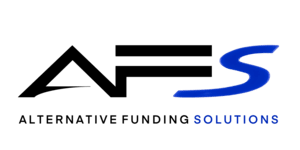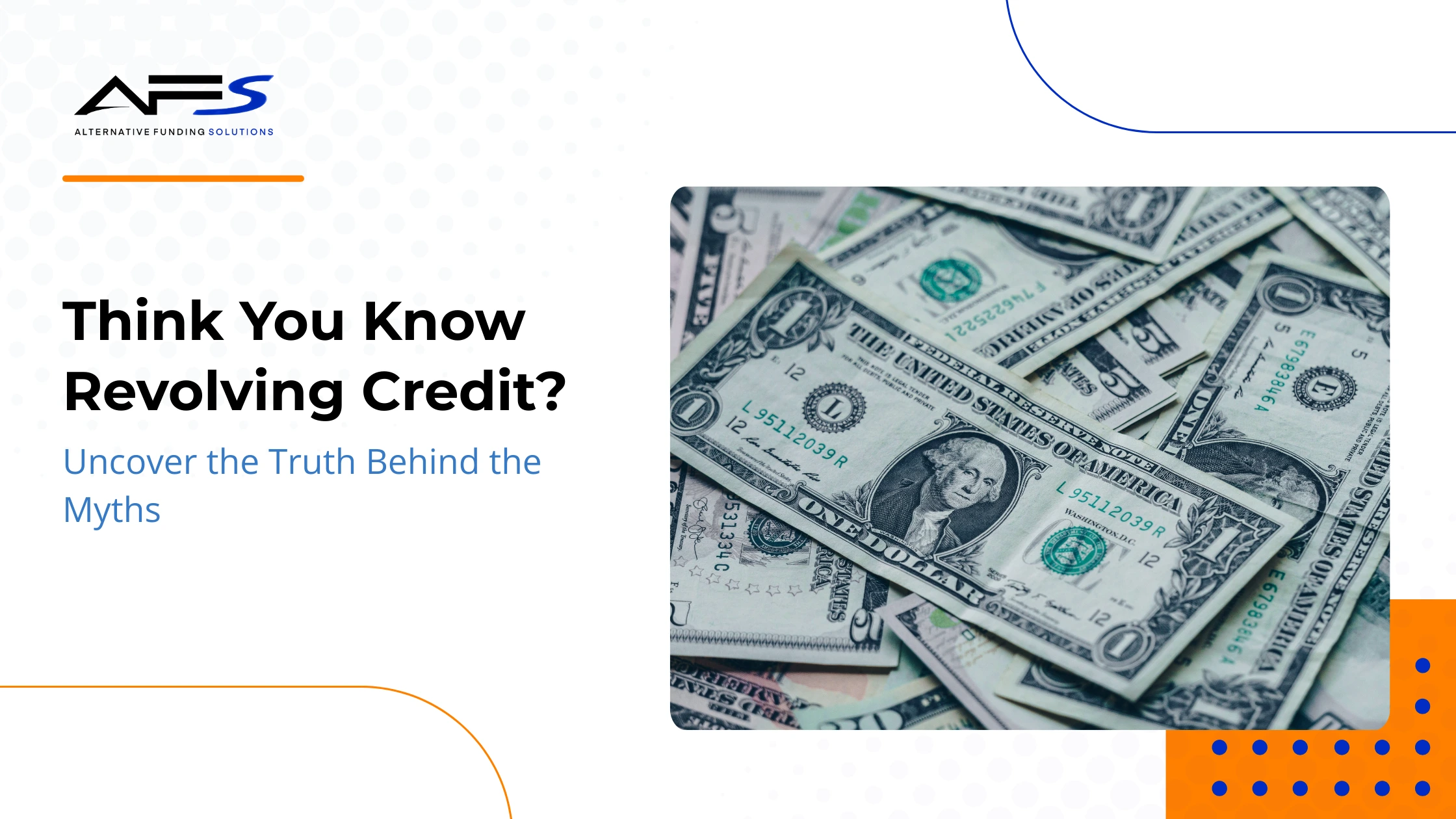Revolving lines of credit are powerful financial tools, but myths and misconceptions often keep people from using them wisely. In this article, we’ll debunk the most common myths so you can make smarter financial decisions and take full advantage of this flexible funding option.
- Summary
- The article debunks common myths about revolving lines of credit, clarifying misconceptions that often prevent individuals and businesses from using them effectively.
- It explains that revolving credit can improve credit scores when used responsibly by keeping credit utilization low and making timely payments.
- The blog dispels the myth that higher credit limits are risky, highlighting that they can actually lower your utilization ratio and boost your credit score when managed wisely.
- It clarifies that revolving credit is available to people across all credit levels, not just those with bad credit, and notes that secured lines of credit can help rebuild poor credit.
- Finally, the blog addresses the misconception that revolving credit is the same as a credit card, explaining that options like HELOCs and business lines of credit offer different features designed for specific financial needs.
Understanding Revolving Lines of Credit
A revolving line of credit (LOC) lets you borrow up to a set limit, repay what you use, and borrow again as needed. Unlike installment loans, where you receive a lump sum and repay it over time, revolving credit offers ongoing flexibility. Common examples include:
- Personal lines of credit – for emergencies, home improvements, or consolidating debt
- Business lines of credit – to smooth out cash flow or cover unexpected costs
- Home equity lines of credit (HELOCs) – to leverage home equity for large expenses
Myth 1 : Does a Revolving Line of Credit Hurt Your Credit Score?
Myth: Revolving lines of credit are designed only for those with poor credit scores.
Truth: Anyone can use revolving credit effectively.
- People with strong credit often qualify for better terms and higher limits.
- Those with lower scores can rebuild credit by making timely payments on secured credit lines.
Myth 2: Are Higher Credit Limits Risky?
Myth: A higher credit limit increases the risk of debt.
Truth: A higher limit can work in your favor if you manage it wisely.
- Lower utilization ratio – More available credit with the same spending improves your score.
- Greater flexibility – Higher limits can help you handle larger expenses without maxing out.
- Discipline is key – Overspending is a choice, not an inevitability.
Myth 3: Is Revolving Credit Only for People with Bad Credit?
Myth: Revolving lines of credit are designed only for those with poor credit scores.
Truth: Anyone can use revolving credit effectively.
- People with strong credit often qualify for better terms and higher limits.
- Those with lower scores can rebuild credit by making timely payments on secured credit lines.
Myth 4: Do You Have to Pay Off Revolving Credit in Full Each Month?
Myth: You must pay off your entire balance monthly to avoid penalties.
Truth: Paying in full helps you avoid interest, but it’s not mandatory.
- You can carry a balance, but you’ll pay interest on what remains.
- Paying more than the minimum reduces debt faster and limits interest costs.
- Set up automatic payments to avoid missed due dates.
Myth 5: Is Revolving Credit the Same as a Credit Card?
Myth: All revolving credit products are just like credit cards.
Truth: While credit cards are a type of revolving credit, they’re not the only option.
- Credit cards – Ideal for everyday purchases but usually come with higher interest rates.
- HELOCs – Often lower interest, better suited for home improvements or large expenses.
- Business lines of credit – Perfect for managing operational costs or bridging cash flow gaps.
Real-World Example
A small construction firm faced cash flow issues between projects. By opening a revolving business line of credit, they covered payroll without taking on long-term debt. By keeping utilization below 30% and paying on time, they boosted their credit score while maintaining steady operations.
Why These Myths Persist & Their Consequences
- Lack of Financial Literacy – The persistence of these myths can often be attributed to a lack of financial education. Many people simply don’t understand how revolving credit works, leading to misunderstandings about its impact on their finances.
- Consequences of Believing in Myths – Believing in these myths can lead to missed opportunities, such as avoiding a beneficial form of credit or mismanaging debt. For example, avoiding a revolving line of credit due to fear of harming your credit score could prevent you from leveraging a flexible financial tool that could improve your credit utilization ratio.
Additionally, people who believe they must always pay off their balance in full may miss out on the benefits of having a credit line available when emergencies arise.
How to Effectively Use Revolving Credit
Tips for Managing Revolving Credit
To use revolving credit responsibly, follow these tips:
- Keep your credit utilization low: Aim to use no more than 30% of your credit limit.
- Make payments on time: Timely payments are crucial to avoiding late fees and interest charges.
- Monitor your spending: Track your spending to ensure that you don’t exceed your limits or fall behind on payments.
- Consider automatic payments: Set up automatic payments to ensure that you never miss a payment.
When to Consider Revolving Credit
Revolving credit can be useful in many situations, such as:
- Emergencies: When unexpected expenses arise, revolving credit provides a safety net.
- Business needs: Revolving credit can help businesses manage cash flow and unexpected costs.
- Debt consolidation: You can use a revolving line of credit to pay off high-interest debts, reducing your overall interest charges.
Frequently Asked Questions (FAQs)
Q. Can I get a revolving line of credit with bad credit?
Yes. Secured lines or credit-building programs are available to help rebuild your score.
Q. When should I consider a revolving line of credit?
It’s ideal for emergencies, bridging cash flow gaps, or consolidating high-interest debt.
Q. Is a personal loan better than a revolving credit line?
It depends on your goals. A personal loan gives you a lump sum, while a revolving line provides ongoing flexibility.
Conclusion
Don’t let myths hold your finances or business back. Revolving lines of credit can strengthen cash flow, improve credit scores, and give you the flexibility to handle unexpected expenses or seize new opportunities.
At Alternative Funding Solutions, we make it simple to find the right credit option tailored to your needs and goals.
Contact us today to get started and unlock the financial flexibility you deserve.

